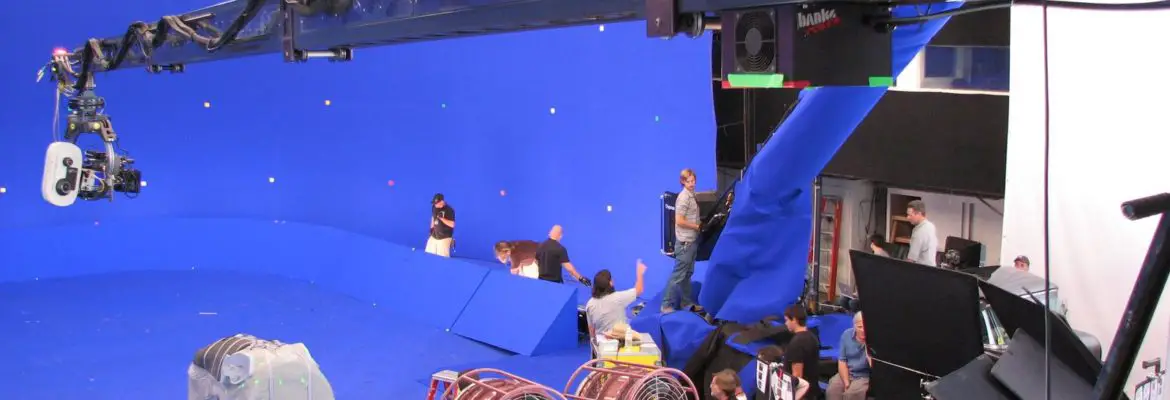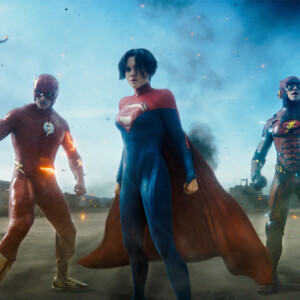Blue Screen Vs. Green Screen: Is There Any Real Difference?
The answer is yes. There is a difference between using blue screen vs. green screen. And we’re not just talking about color. Other colors such as black have also been used but is little known. Here we focus exclusively on blue screen vs. green screen.
First, you need to understand chroma key compositing and why blue or green screens are required. From there, we’ll cover the various factors you need to consider in choosing the most appropriate screen for your film. We’ll also use some relevant examples from films, and since here at Bold Entrance, we focus on major franchises, our examples will follow suit.
Chroma Key Compositing
Chroma Key compositing, or chroma keying, is a visual effects and post-production technique where two images or video streams are layered (composited) together based on color hues. Every color of the spectrum has a chroma range. When filming, the green or blue screen (a solid block of color) acts like a matte for your footage. In post-production, you can remove this solid color background to make it transparent. This makes compositing possible.
Why use blue or green screens?
There is an important reason for using blue or green. The reason is that on a color wheel, blue and green are furthermost from human skin tones. On a color wheel blue and green sit on the opposite of where skin tones sit. Humans are, of course, the main subject of the majority of live-action films, making blue or green a good contrast for compositing.
Remember all the “Making of” videos from old science fiction films like Star Wars: A New Hope? Remember how they exclusively used blue screens for inserting special effects into film? Well, there is a reason for this. Blue screen was the traditional chroma key of choice for two reasons. First, the blue channel has the smallest grain, which gives a cleaner matte along edges and a better quality image. Secondly, blue shows up as bright white when exposed onto black and white film with a blue light. This makes blue screen perfect to use with an optical printer to initiate compositing.
So why the shift to green screen?
As film-making shifted to a digital post-production process, green screens became favorable. Partly, this is because digital cameras capture twice the amount of green than red or blue hues, which makes it easier to key out in post-production. Another reason is that green screens need less light than blue screens as green reflects more light. It has a brighter luminance. Less light means less cost.
In addition, green is typically uncommon in costumes, which means less issues in post-production. This had been a problem for blue screen work in the past. Most notably in filming Superman’s costume in Superman — The Movie. The filmmakers had to opt for a different shade of blue to distinguish his suit from the blue screen. Then, in post, Superman’s suit was color-corrected back to the appropriate shade for the film’s release.
Conversely, the MCU is, for the most part, shot in front of a green screen. This is great for characters like Captain America, but for Hulk it easily could have produced similar problems for Hulk. ILM’s solution was to desaturate Hulk to greyscale for many shots, then balance him in the shot, before bringing him back to his green hue.
Nonetheless, blue screen is still used today. The choice between blue and green screen really comes down to the demands of the project.
Advantages / Disadvantages of Each Screen
Green Screen
As discussed, digital cameras capture double the information on the green channel. This gives a cleaner key around the subject, and there is less noise problems. They are also great for a limited budget because they require less light. Also, the color spill helps with compositing objects into daytime shots, because green is brighter. The result is a more natural appearance.
Furthermore, digital keying effects and tools are set up to key out green, because of the green screens prolific use in the digital age of film-making. This results in a more efficient post-production process.
However, nothing is perfect. The biggest issue with this channel is that green screens produce more color spill than blue screens. Green is brighter than blue, and will, therefore, bounce back more light. This light is tinged with a green hue, which produces a large, diffuse green light behind an object. Thus, objects have more color spill, which is difficult to remove in post. Most problematic are hair, metallic reflections, mesh, and costume details.
In addition, green produces greater luminance, making it a less than ideal choice for compositing an object into a dark or nighttime scene. The result is an unnaturally bright appearance from the light reflected off the green screen.
Blue Screen
The primary benefit of using a blue screen is less color spill. The low luminance value of blue means it bounces less light back. This makes blue screen ideal for filming small details, which is retained after blue is keyed out in post. Blue is also the screen of choice for nighttime scenes, because they reflect less light onto an object.
There are two primary disadvantages with blue screens. The first, as discussed already, is that blue is common in clothing, and thus needs more work to key in post. The second issue, is blue screens need more light to expose than green screens, requiring more powerful–and expensive–lighting.
Additional resources
There are other colors that can be used like black, white and even red. You can certainly experiment. Beyond that, check out John Hess’ video on the Evolution of Green Screen Compositing for history on the technique.
- Heart of Stone: Female Bond-Clone References Moonraker, On Her Majesty’s Secret Service and Other Bond Films - February 8, 2024
- How Editor Peter Hunt Saved ‘From Russia With Love’ - January 27, 2024
- This Periodic Table of Tropes Is The Ultimate Storytelling Infographic - January 22, 2024





